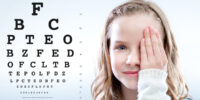What Is the Impact of Blue Light on Sleep Patterns

Blue light, a type of high-energy visible light emitted by electronic devices and energy-efficient light bulbs, has garnered increasing attention due to its potential impact on sleep patterns. This article seeks to explore the scientific underpinnings of blue light, its relationship with melatonin production, and its influence on the circadian rhythm.
Furthermore, it aims to examine the repercussions of blue light exposure on sleep quality and present strategies to minimize such exposure before bedtime. Additionally, the role of blue light filters and glasses in improving sleep will be discussed.
Key Takeaways
- Blue light emitted by electronic devices and energy-efficient light bulbs can disrupt the body’s natural sleep-wake cycle.
- Prolonged exposure to blue light before bedtime can suppress melatonin production and make it difficult to fall asleep and maintain a healthy sleep pattern.
- Excessive blue light exposure may increase the risk of age-related macular degeneration and sleep-related disorders.
- Using blue light filters on electronic devices, limiting recreational screen time, establishing device-free zones, and promoting healthy sleep habits are effective strategies to minimize blue light exposure and mitigate its negative effects on sleep patterns.
The Science Behind Blue Light
The scientific literature extensively examines the effects of blue light on sleep patterns. Blue light, which is emitted by electronic devices such as smartphones, tablets, and computers, has been found to have various impacts on eye health and mood regulation.
Research shows that exposure to blue light can lead to digital eye strain, causing symptoms such as dryness, irritation, and blurred vision. Prolonged exposure to blue light before bedtime can also disrupt the body’s natural sleep-wake cycle, known as the circadian rhythm, leading to difficulties falling asleep and decreased sleep quality.
Additionally, blue light exposure has been linked to mood changes, including increased feelings of depression and anxiety. Understanding the science behind blue light is crucial for developing strategies to mitigate its negative effects on both eye health and mood regulation.
Blue Light and Melatonin Production
Melatonin, a hormone produced by the pineal gland, plays a crucial role in regulating the sleep-wake cycle.
However, exposure to blue light, particularly in the evening, can suppress melatonin production and disrupt this delicate balance.
Studies have shown that exposure to blue light from electronic devices such as smartphones and laptops can significantly delay the onset of melatonin secretion, leading to difficulties in falling asleep and maintaining a healthy sleep pattern.
Melatonin Suppression by Blue Light
Light exposure in the blue spectrum has been found to inhibit the production of the hormone associated with sleep regulation. Blue light has gained attention due to its association with eye strain and its prevalence in digital devices.
Numerous studies have shown that exposure to blue light emitted by electronic screens, such as smartphones, tablets, and computers, can disrupt the normal production of melatonin. The eyes are particularly sensitive to blue light, and extended exposure to it can lead to eyestrain and fatigue.
The use of digital devices before bedtime, which emit high levels of blue light, can interfere with the body’s natural circadian rhythm and suppress melatonin levels. This disruption in melatonin production can result in difficulty falling asleep and can negatively affect sleep quality.
Disrupted Sleep-Wake Cycle
Disruptions in the normal regulation of the sleep-wake cycle can have adverse effects on physiological and psychological well-being. Blue light, emitted by electronic devices and energy-efficient light bulbs, has been found to affect sleep patterns by suppressing the production of melatonin, a hormone that regulates sleep.
However, the impact of blue light on sleep patterns extends beyond melatonin suppression. Research suggests that exposure to blue light before bedtime can also lead to disruptions in the sleep-wake cycle, resulting in difficulty falling asleep and reduced sleep quality.
Moreover, prolonged exposure to blue light may have negative consequences for eye health, including increased risk of age-related macular degeneration and sleep-related disorders. Additionally, evidence suggests that disrupted sleep, caused by excessive exposure to blue light, can contribute to mental health issues such as depression and anxiety.
Therefore, it is important to minimize exposure to blue light, especially in the evening, to maintain a healthy sleep-wake cycle and promote overall well-being.
How Blue Light Affects Circadian Rhythm
Blue light exposure has been found to disrupt the natural sleep cycle, leading to difficulties in falling asleep and maintaining sleep. This disruption is attributed to the suppression of melatonin production, a hormone that helps regulate sleep-wake cycles.
The impact of blue light on melatonin production has been extensively studied, with research suggesting that exposure to blue light in the evening can lead to delayed melatonin release, further exacerbating sleep disturbances.
Disrupts Natural Sleep Cycle
Exposure to high-intensity artificial light, such as that emitted by electronic devices, can lead to disturbances in the natural circadian rhythm, which governs the sleep-wake cycle. This disruption occurs primarily due to the presence of blue light in these devices. Blue light has been shown to have detrimental effects on both eye health and cognitive function.
- Blue light and eye health: Prolonged exposure to blue light can contribute to digital eye strain, dry eyes, and potentially increase the risk of age-related macular degeneration.
- Blue light and cognitive function: Blue light exposure before bedtime can suppress the production of melatonin, a hormone crucial for sleep regulation. This can result in difficulties falling asleep, poor sleep quality, and daytime sleepiness. Additionally, disrupted sleep patterns can negatively impact cognitive function, including attention, memory, and decision-making abilities.
Therefore, it is important to limit exposure to blue light, particularly in the evening, to maintain a healthy sleep-wake cycle and promote overall well-being.
Impacts Melatonin Production
The previous subtopic discussed how blue light disrupts the natural sleep cycle. Building upon that, it is important to understand the impact of blue light on melatonin production.
Melatonin is a hormone that regulates sleep-wake cycles and is primarily produced in the brain’s pineal gland. Research suggests that exposure to blue light, particularly from digital devices, can suppress melatonin production and delay the onset of sleep.
This is because the blue light emitted by these devices is similar to the natural light cues that regulate our circadian rhythm. The excessive exposure to blue light from digital devices, especially in the evening, can trick the brain into thinking it is still daytime and inhibit the release of melatonin.
Consequently, this can lead to difficulty falling asleep and disrupted sleep patterns, ultimately affecting overall sleep quality and potentially compromising eye health.
Blue Light’s Influence on Sleep Quality
Light emitted from electronic devices has been shown to disrupt sleep quality. Blue light, which is emitted by devices such as smartphones, tablets, and computers, has been identified as particularly problematic in this regard.
Research has found that exposure to blue light in the evening can suppress the production of melatonin, a hormone that helps regulate sleep-wake cycles. This disruption of melatonin production can lead to difficulties falling asleep and maintaining a deep, restful sleep.
The impact of blue light on sleep quality is especially concerning for children, as they tend to have higher sensitivity to light and their sleep patterns are still developing.
Additionally, prolonged exposure to blue light before bedtime has been associated with increased risk of sleep disorders such as insomnia and delayed sleep phase syndrome.
- Blue light emitted by electronic devices suppresses melatonin production.
- Exposure to blue light in the evening can lead to difficulties falling asleep.
- Blue light disrupts the maintenance of deep, restful sleep.
- Children are particularly sensitive to the effects of blue light on sleep patterns.
- Prolonged exposure to blue light before bedtime increases the risk of sleep disorders.
Strategies to Minimize Blue Light Exposure Before Bedtime
To mitigate the negative effects on melatonin production, strategies can be implemented to reduce the use of electronic devices in the evening. One effective strategy is the use of blue light filters on electronic devices. Blue light filters work by reducing the amount of blue light emitted from the screen, thus minimizing its impact on melatonin production and sleep patterns.
Another strategy is to adhere to screen time recommendations. The American Academy of Pediatrics recommends limiting recreational screen time to no more than one hour per day for children aged 2 to 5 years. For older children and adolescents, it is recommended to have consistent limits on the amount of screen time and to establish device-free zones, such as bedrooms, to promote healthy sleep habits.
Implementing these strategies can help minimize blue light exposure before bedtime and improve sleep quality.
The Role of Blue Light Filters and Glasses in Sleep Improvement
One effective way to improve sleep quality is through the utilization of blue light filters and glasses, which work by reducing the amount of specific wavelengths emitted from electronic devices. These filters and glasses can have a significant impact on sleep improvement by mitigating the disruptive effects of blue light exposure.
Some key benefits of blue light filters and glasses include:
- Reduced eye strain and fatigue
- Enhanced melatonin production
- Improved sleep onset and duration
- Minimized sleep disturbances
- Regulation of circadian rhythm
By reducing the amount of blue light reaching the eyes, these filters and glasses promote a more natural sleep-wake cycle and help individuals achieve a more restful and rejuvenating sleep.
Incorporating blue light filters and glasses into daily routines can be a simple yet effective strategy to optimize sleep quality and overall well-being.
Frequently Asked Questions
Can Exposure to Blue Light Affect Other Aspects of Health Besides Sleep Patterns?
Exposure to blue light has been associated with negative health effects beyond sleep patterns, including disruption of circadian rhythm, eye strain, and increased risk of certain diseases. However, there may also be potential benefits, such as enhanced alertness and mood regulation.
Are There Any Long-Term Negative Effects of Blue Light Exposure on Sleep Patterns?
Long-term exposure to blue light may lead to sleep disruption. The impact of blue light on sleep patterns has been studied extensively, with evidence suggesting that it can negatively affect the quality and duration of sleep over time.
Can Blue Light Exposure During the Day Help Regulate Sleep Patterns at Night?
Blue light exposure during the day has been found to have potential benefits in regulating sleep patterns at night. This can be achieved through blue light therapy or the use of blue light blocking glasses.
What Are Some Common Sources of Blue Light That People May Not Be Aware Of?
Common sources of blue light include digital devices, such as smartphones and laptops, as well as LED lights and fluorescent bulbs. Prolonged exposure to blue light can potentially impact eye health and disrupt circadian rhythms.
Are There Any Specific Groups of People Who May Be More Susceptible to the Effects of Blue Light on Sleep Patterns?
Specific groups of individuals may vary in their susceptibility to the effects of blue light on sleep patterns. Factors such as age, pre-existing sleep disorders, and exposure duration may contribute to differing levels of vulnerability.









